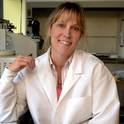
- Biology and
- Life Sciences
Background: Endurance flight impose substantial oxidative costs on the avian oxygen delivery system. In particular, the accumulation of irreversible damage in red blood cells can reduce the capacity of blood to transport oxygen and limit aerobic performance. Many songbirds consume large amounts of anthocyanin-rich fruit, which is hypothesized to reduce oxidative costs, enhance post-flight regeneration, and enable greater aerobic capacity. While their antioxidant benefits appear most straightforward, the effects of anthocyanins on blood composition remain so far unknown. We fed thirty hand-raised European starlings (Sturnus vulgaris) two semisynthetic diets (with or without anthocyanin supplement) and manipulated the extent of flight activity in a wind tunnel (daily flying or non-flying for over two weeks) to test for their interactive effects on functionally important haematological variables.
Results: Supplemented birds had on average 15% more and 4% smaller red blood cells compared to non-supplemented individuals and these diet effects were independent of flight manipulation. Haemoglobin content was 7% higher in non-supplemented flying birds compared to non-flying birds, while similar haemoglobin content was observed among supplemented birds that were flown or not. Neither diet nor flight activity influenced haematocrit.
Conclusion: The concerted adjustments suggest that supplementation generally improved antioxidant protection in blood, which could prevent the excess removal of cells from the bloodstream and may have several implications on the oxygen delivery system, including improved gas exchange and blood flow. The flexible haematological response to dietary anthocyanins may also suggest that free-ranging species preferentially consume anthocyanin-rich fruits for their natural blood doping, oxygen delivery-enhancement effects.
Dzialo, M., Bryła, A., DeMoranville, K. J., Carbeck, K. M., Fatica, O., Trost, L., Pierce, B., Sadowska, E. T., McWilliams, S. R., & Bauchinger, U. (2023). Concerted phenotypic flexibility of avian erythrocyte size and number in response to dietary anthocyanin supplementation. Frontiers in Zoology, 20(1), 9. Doi.org/10.1186/s12983-023-00487-y

Open Access This article is licensed under a Creative Commons Attribution 4.0 International License